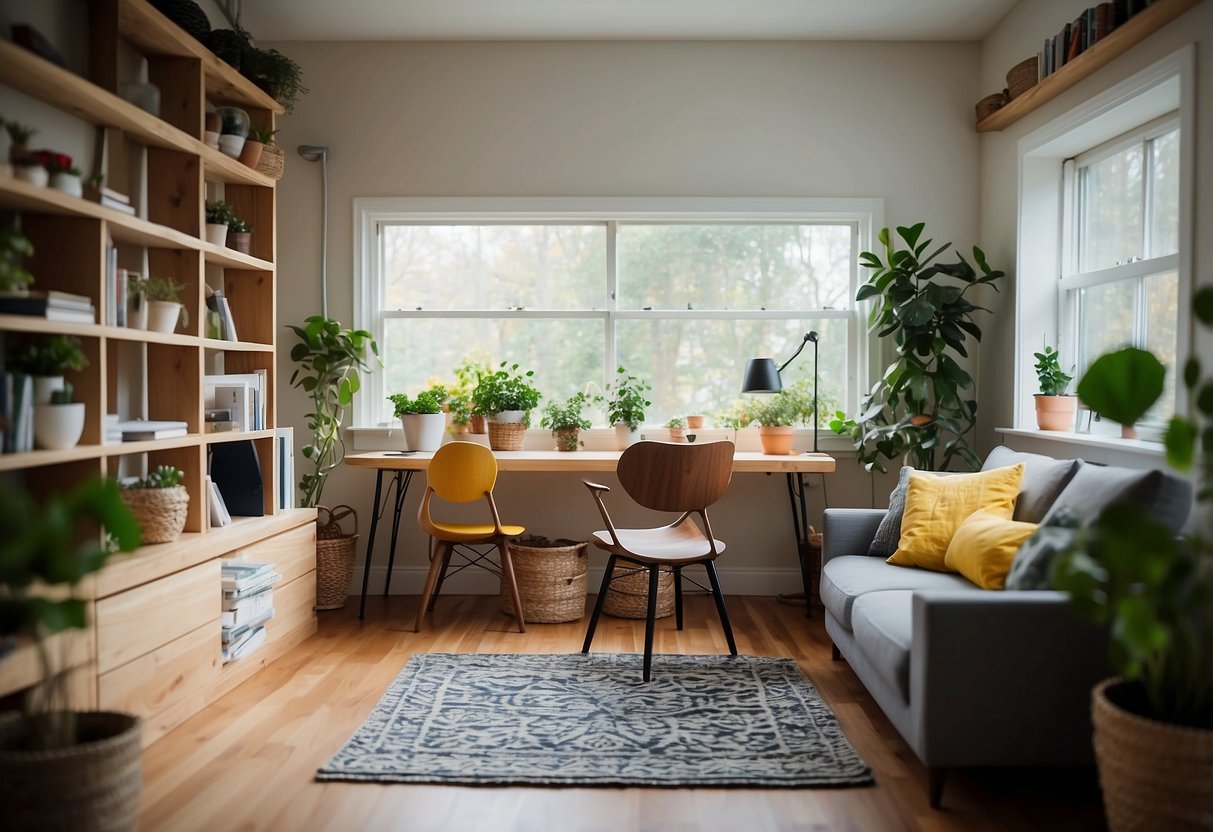
Embarking on home improvement projects can be a rewarding endeavor that brings both personal satisfaction and a boost to your home’s value. These projects are especially appealing to beginners who wish to take on manageable tasks without needing extensive experience or a vast array of tools. Starting with simple DIY projects allows individuals to gradually build their skills and confidence.
Home improvement doesn’t have to be daunting or costly. By focusing on projects suited for beginners, anyone can make significant changes to their living space with minimal stress. The projects highlighted here offer practical ways to enhance various aspects of your home while providing step-by-step guidance to ensure success.
1. Paint a Room
Painting a room is a straightforward and impactful home improvement project for beginners. He or she can choose a color that suits their style and dramatically transform the look of a space.
Before starting, it is important to prepare the room. Move furniture to the center and cover it with a drop cloth or plastic sheet. Tape edges and trim to ensure clean lines.
Next, sand any rough areas on the walls and fill in holes with spackle. Once the spackle is dry, sand it smooth.
When ready to paint, start with a primer if the walls are dark or stained. This step ensures vibrant and long-lasting color. Choose a paint finish that suits the room’s function. For example, matte is great for hiding imperfections, while semi-gloss is more durable for high-traffic areas.
Use a high-quality roller for large areas and a brush for edges and corners. Paint in long, even strokes to avoid streaks. Multiple coats may be needed, depending on the color and type of paint.
Clean up immediately after painting. Wash brushes and rollers according to the paint manufacturer’s instructions. Remove tape carefully once the paint is dry to avoid peeling off fresh paint.
A freshly painted room can make a home feel new and inviting. This Project provides a sense of accomplishment and a noticeable change with minimal cost and effort.
2. Install a Backsplash
Installing a backsplash is a great way to update a kitchen or bathroom. It’s a project that beginners can handle with some basic tools and patience. The first step is to choose the material. Common options include tiles, peel-and-stick sheets, and even stainless steel.
Preparation is key for a successful installation. Clean the wall surface to ensure strong adhesion. It’s essential to measure the area accurately, so you’ll know how much material you’ll need. Cut the backsplash material to fit the dimensions of the space.
Use spacers to maintain even gaps between tiles if you’re using traditional tiles. For peel-and-stick options, ensure they are aligned correctly before pressing them into place. Take your time, and avoid rushing through the alignment process.
Apply adhesive to the wall if required by the material you chose. Press the backsplash pieces firmly into the adhesive. Use a level to ensure that everything is straight. If needed, trim any edges with a tile cutter or scissors.
Grout can be applied between tiles once the adhesive has set. Clean off any excess grout with a damp sponge before it dries completely. This will ensure a clean and neat finish.
Seal the edges where the backsplash meets the countertop and cabinets with a silicone sealant. This will protect against water damage and provide a polished look. Installing a backsplash can dramatically improve the look of a kitchen or bathroom. This project is manageable for beginners with some attention to detail and preparation.